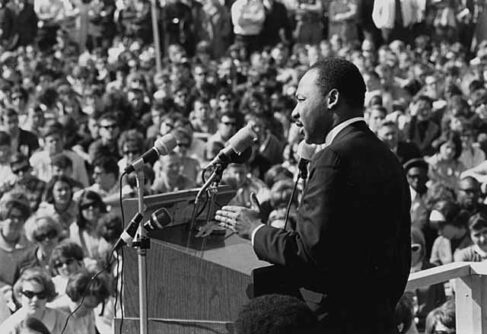As important as guarding against deviations from donor intent, is finding pathways to fulfill it.
In the fourth edition of his book, Martin Morse Wooster presents gripping case studies of great fortunes squandered by heirs and foundation trustees and other fortunes cultivated to become powerful legacies, as already discussed this week at Philanthropy Daily’s by Scott Walter and Eduardo Andino.
But the subtitle of Wooster’s book is You Can Succeed at Protecting Your Legacy, and his readers will want not merely a gripping read but also practical steps for their own giving. In the third and final section of his valuable book, he offers practical strategies for donors to preserve their intent.
Wooster argues that two of the most powerful strategies for protecting donor intent are to give away your wealth during your lifetime or, failing that, to term-limit (or “sunset”) your foundation, so that only you or your most trusted confidants oversee your philanthropy.
Both of these strategies honor the deeply personal nature of philanthropy. It is no wonder that these strategies are becoming more common. Wooster highlights the example of the Atlantic Philanthropies, which closed last year to widespread notice after distributing billions donated by businessman Chuck Feeney.
Wooster is right that giving while living or sun-setting are essential guardrails to keep gifts from departing from donors’ intent. As important, however, as guarding against deviations from donor intent, is finding pathways to fulfill your intent. He describes some strategies for defining your donor intent in a brief, final chapter, such as creating a written record of your intentions and separating business and philanthropic interests.
In addition to the strategies Wooster describes in the final section of his book, readers will want to consider these general lessons from his case studies:
Find a focus for your philanthropy. Donors find their focus by identifying the community or institution they wish to benefit and envisioning the difference they want to make. Donors focused on very different groups of people might support the same institution: For example, a donor who aspires to ensure that schoolchildren learn about art and a donor who cares about supporting artists might both support their local museum.
Create a pool of candidate recipients of your philanthropy. The charity or nonprofit institution that best advances the cause you care about might not be the one that comes first to mind. In my work with college donors, I find most think of giving to their alma maters first. I challenge donors to think of at least another two or three other schools where they would be proud to make an impact through their giving, such as a college their children or grandchildren attended, or a school near where they established a business. Once donors create options for themselves, they often discover that the school with the greatest capacity to make good use of their gift is not their alma mater. They end up giving to that school in addition to, or instead of, their alma mater.
Take your time and get lots of advice. You might ask like-minded donors which charities they support, and why. If possible, attend events of organizations you are considering. Perhaps your family foundation might put out a request for proposals: You would not only have the opportunity to judge which proposal is most promising, but also to learn about the leadership of an organization through how they communicate with you during the application process. Or, you might turn to an advisor to help match your philanthropic aims with meritorious organizations; the Fund for Academic Renewal, for example, matches donors with collegiate programs aligned with donors’ interests, and we suggest readings for thoughtful donors, including the American Council of Trustees and Alumni’s Intelligent Donor’s Guide to College Giving (which offers lessons readily extended from college giving to other philanthropic arenas). Before signing on the dotted line of a gift agreement, be sure to sit down with the person or team who will be carrying out the work you are supporting.
Once donors identify their philanthropic goals and find a worthy recipient, the next step is crafting a gift agreement.
Make sure your gift agreement requires regular reports. Your beneficiary should know that the reports will be read with care, not simply filed away. These reports should be the basis for ongoing conversations if you or the recipient of your gift see ways to augment program success, or if you think that a course-correction about the use of your gift is in order.
With these steps donors will be ready to make an enduring impact with their philanthropy.






